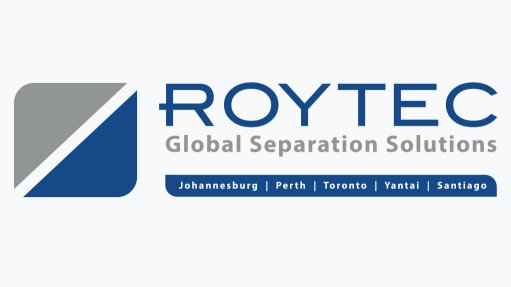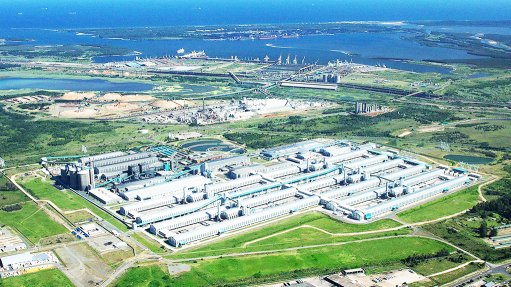US auto import tariff will not drastically impact PGM demand – WPIC
The World Platinum Investment Council (WPIC) finds in its latest Platinum Essentials publication that the US’s 25% tariff on vehicle imports from April 3 and parts from May 3 will have a 70 000 oz impact on platinum and 269 000 oz impact on palladium demand.
The US is a net importer of vehicles, with 55% of the vehicles sold in the US being made abroad.
The US is the second-largest automotive market globally, served by an international supply chain. The country imported 8.6-million vehicles in 2023, while $92-billion worth of component imports supported domestic production of 10.5-million vehicles.
The US most often imports vehicles from South Korea, Mexico and Japan.
On average, net imports have accounted for 32% of new-vehicle sales in the US since 2010.
The 25% tariff on US vehicle and component imports will likely decrease yearly sales by 1.7-million vehicles. Lost automotive and platinum demand from tariffs will be largely offset by lower automotive recycling supply as consumers shift to the used car market.
The WPIC calculated, using consumer purchasing/price sensitivity, at a 25% tariff level, the impact to platinum group metals (PGMs) will be relatively small owing to reduced scrapping of used vehicles and thereby lower PGM recycled supply.
However, fears of tariffs on metals imports, which is already distorting market conditions, could have a more significant and outsized impact on accentuating current market tightness, the WPIC warns.
The US’s trade deficit associated with the automotive sector was $300-billion in 2024, having increased by an average 7.3% every year from 2010 to 2024, which equates to a large drag on the US’s national trade deficit of $1-trillion.
While tariffs may narrow trade deficits, re-domiciling production takes time and will also increase costs that will also in some form be passed onto the consumer, which will impact demand.
The WPIC says the US tariffs will raise the cost of doing business for automakers regardless of how management teams seek to adapt. The WPIC estimates re-shoring of production to the US will take at least 18 to 24 months and carry higher production costs.
The altering of supply chains, since global automakers may re-route sales to lower tariff regions, will also lead to higher costs.
In general, a rising share of US vehicle imports had led to a decade of vehicle price deflation in real terms from 2010, supporting US sales. Historic sales and price data show a 1% change in the real price of new vehicles impacts sales by 0.5% to 0.6%.
In the unlikely scenario that the full 25% tariff is added to vehicle prices, US demand for imported vehicles could decline by 1.3-million units while the impact on domestically produced vehicles would equate to 400 000 units from higher priced parts.
SELLING PRICE IMPACT
The WPIC further explains that the remaining tariff mitigation option would be to adjust selling prices. Since automotive demand has shown some elasticity with prices, where tariffs do get applied to imports, the organisation expects automakers to balance price increases with volume adjustments seeking to maximise value.
“We estimate that US vehicle sales change by between 0.5% and 0.6% for each 1% change in real vehicle prices based on average data for 2013/14, 2018/19 and 2023/24,” the WPIC adds.
While the WPIC does not have granular insights on where imported components are being used in the US, it estimates an impact of $23-billion in tariff-related costs, evenly distributed across the 10.6-million vehicles produced in the US at a cost of $2 167 per vehicle.
If normalised for inflation, the WPIC estimates that the full pass-through of incremental tariff costs associated with component imports would be a 6.5% selling price increase which would, in turn, negatively impact domestically produced vehicle sales by about 3.9%, or 400 000 units.
Beyond the direct impact of tariffs on imported vehicles and components, trade counterparts are likely to enact reciprocal tariffs.
Counter tariffs will reduce demand for the US’s 3.2-million passenger and commercial vehicle exports.
Elsewhere, second order effects of any broad-based tariff policy could be higher prices for primary material imports such as steel and aluminium.
“While we expect the impact of tariffs on raw materials would be significantly lower than tariffs on vehicles and components, these could similarly prove inflationary with some additional negative impact on new vehicle demand,” the WPIC states.
PGM DEMAND RISKS
The US automotive sector is estimated to require about 600 000 oz of platinum and 2.4-million ounces of palladium for domestically produced and imported vehicles.
Of this, 70 000 oz of platinum demand and 269 000 oz of palladium demand is at risk owing to the tariffs in the worst case scenario, where the full impact of the tariffs are passed on to consumers and new vehicle sales decline by 1.7-million units.
If consumers are priced out of the new-vehicle market, there is likely to be greater demand for used cars and therefore reduced vehicle scrappage, thereby reducing recycled automotive PGM supply.
WPIC says in the context of PGM supply and demand, the organisation expects that some PGM demand lost within the new vehicle market from tariffs in the US could be partially offset by supply losses through lower recycling.
Lost US automotive demand will not be entirely offset by lower recycled supply, but the net impact on PGM supply and demand from tariffs would nonetheless be negligible at 19 000 oz for platinum and 71 000 oz for palladium.
Despite expectations, the actual impact of vehicle tariffs on PGM demand should be relatively limited; the reality is that volume changes in the US automotive market just isn’t that important to platinum demand, but it is more significant in terms of palladium.
However, the uncertainties, the fragility in the US consumer credit landscape and fears of escalation, could have a greater impact, both in terms of vehicle purchasing decisions and PGM price expectations.
The WPIC says the fears that tariffs could spread to PGM metal imports with the corresponding motivation to get metal into the US ahead of time and the artificial market distortions this causes, as well as the growing intergovernmental rift between the Donald Trump administration and South Africa, could have a bigger effect in the near term.
This is likely to continue adding upward pressure on lease rates and accelerate tighter market conditions.
Article Enquiry
Email Article
Save Article
Feedback
To advertise email advertising@creamermedia.co.za or click here
Press Office
Announcements
What's On
Subscribe to improve your user experience...
Option 1 (equivalent of R125 a month):
Receive a weekly copy of Creamer Media's Engineering News & Mining Weekly magazine
(print copy for those in South Africa and e-magazine for those outside of South Africa)
Receive daily email newsletters
Access to full search results
Access archive of magazine back copies
Access to Projects in Progress
Access to ONE Research Report of your choice in PDF format
Option 2 (equivalent of R375 a month):
All benefits from Option 1
PLUS
Access to Creamer Media's Research Channel Africa for ALL Research Reports, in PDF format, on various industrial and mining sectors
including Electricity; Water; Energy Transition; Hydrogen; Roads, Rail and Ports; Coal; Gold; Platinum; Battery Metals; etc.
Already a subscriber?
Forgotten your password?
Receive weekly copy of Creamer Media's Engineering News & Mining Weekly magazine (print copy for those in South Africa and e-magazine for those outside of South Africa)
➕
Recieve daily email newsletters
➕
Access to full search results
➕
Access archive of magazine back copies
➕
Access to Projects in Progress
➕
Access to ONE Research Report of your choice in PDF format
RESEARCH CHANNEL AFRICA
R4500 (equivalent of R375 a month)
SUBSCRIBEAll benefits from Option 1
➕
Access to Creamer Media's Research Channel Africa for ALL Research Reports on various industrial and mining sectors, in PDF format, including on:
Electricity
➕
Water
➕
Energy Transition
➕
Hydrogen
➕
Roads, Rail and Ports
➕
Coal
➕
Gold
➕
Platinum
➕
Battery Metals
➕
etc.
Receive all benefits from Option 1 or Option 2 delivered to numerous people at your company
➕
Multiple User names and Passwords for simultaneous log-ins
➕
Intranet integration access to all in your organisation





















